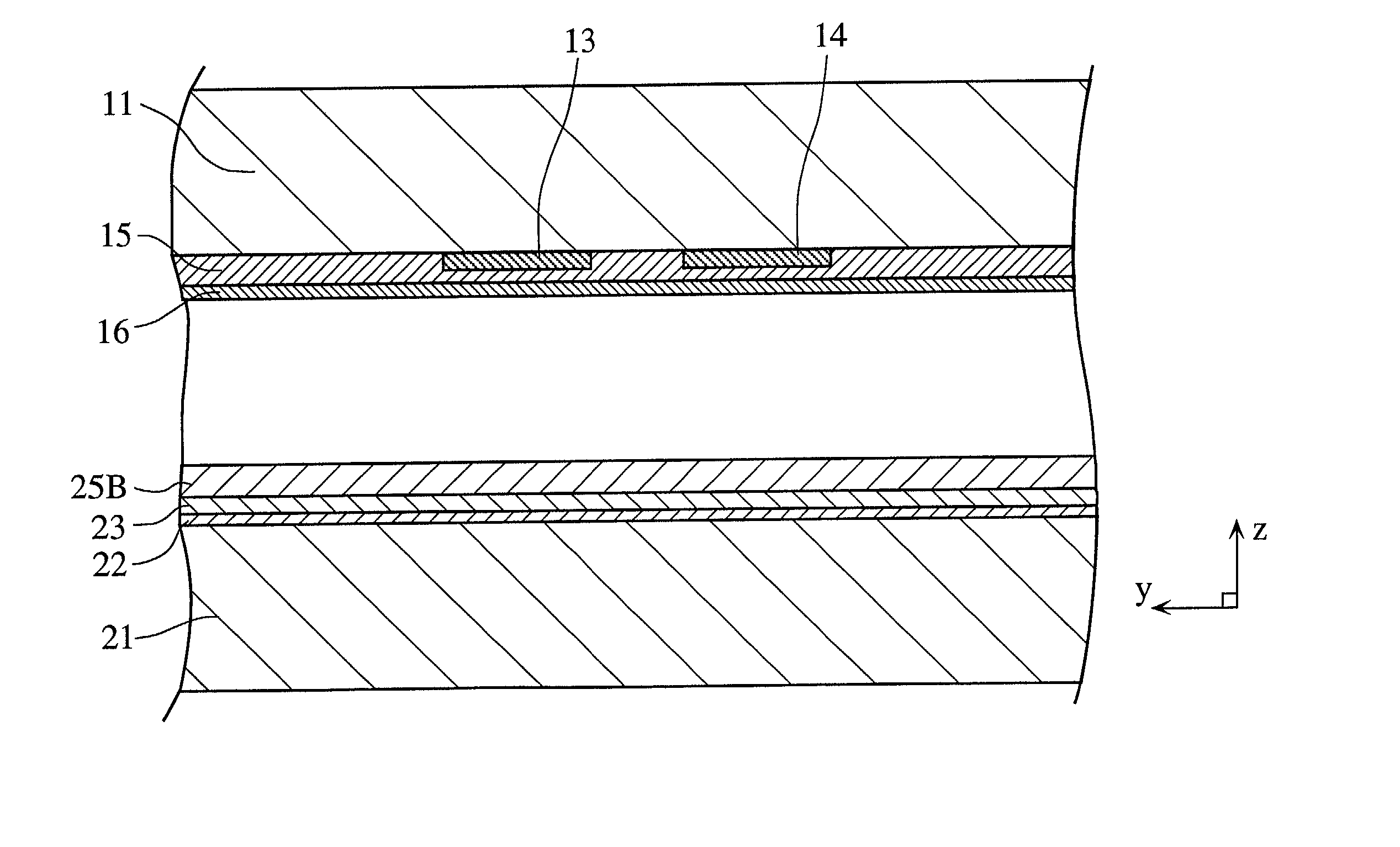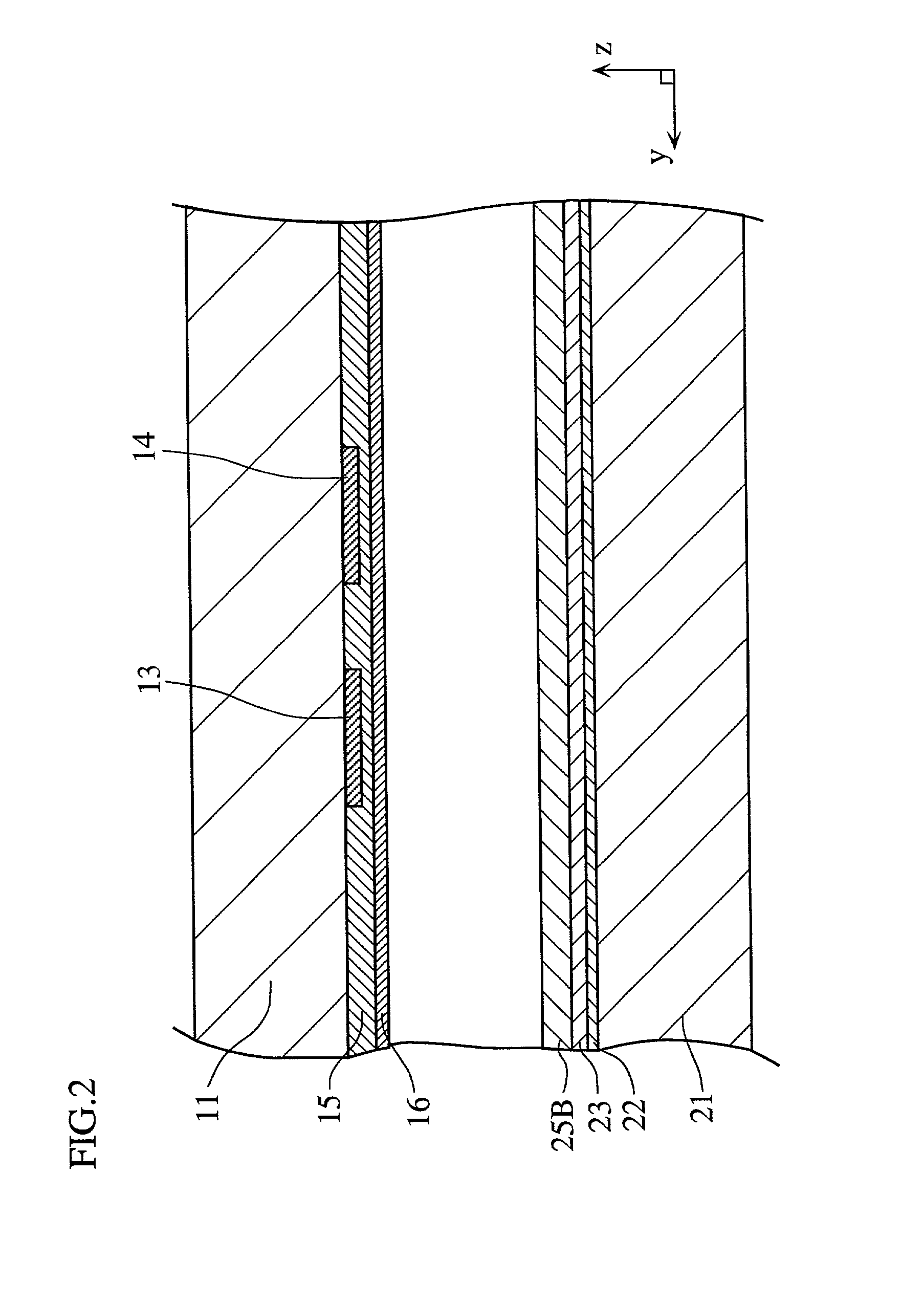Display panel and display panel production method
a technology for display panels and production methods, applied in the field of display panels, can solve the problems of reducing the color temperature of diffused silver inside the glass substrate, yellowing of glass, and deteriorating of color temperatur
- Summary
- Abstract
- Description
- Claims
- Application Information
AI Technical Summary
Benefits of technology
Problems solved by technology
Method used
Image
Examples
Embodiment Construction
Sample
[0109] A PDP front panel was produced by the method disclosed above and shown in FIGS. 5 and 6, as a sample of the preferred embodiment.
[0110] (2) Comparison Sample
[0111] A PDP front panel was produced by the method disclosed above and shown in FIGS. 3 and 4, as a sample of conventional methods for comparison.
[0112] (3) Experimental Procedure
[0113] The amounts of silver and sodium in the front glass substrate of the preferred embodiment sample and comparison sample were measured and compared. FIG. 7, a partial sectional view of a front panel, shows the locations where measurements were taken, specifically, in an area P1 of the front glass substrate 11 with a diameter of 5 .mu.m centered 7.5 .mu.m from the interface of a display electrode 13 (14) and the substrate.
[0114] In addition, measurements of silver and sodium were taken at P2, an area of the dielectric layer 15 with a diameter of 5 .mu.m centered 3 .mu.m from the side of the display electrode 13 (14) and 3 .mu.m from th...
PUM
| Property | Measurement | Unit |
|---|---|---|
| diameter | aaaaa | aaaaa |
| diameter | aaaaa | aaaaa |
| diameter | aaaaa | aaaaa |
Abstract
Description
Claims
Application Information
 Login to View More
Login to View More - R&D
- Intellectual Property
- Life Sciences
- Materials
- Tech Scout
- Unparalleled Data Quality
- Higher Quality Content
- 60% Fewer Hallucinations
Browse by: Latest US Patents, China's latest patents, Technical Efficacy Thesaurus, Application Domain, Technology Topic, Popular Technical Reports.
© 2025 PatSnap. All rights reserved.Legal|Privacy policy|Modern Slavery Act Transparency Statement|Sitemap|About US| Contact US: help@patsnap.com



